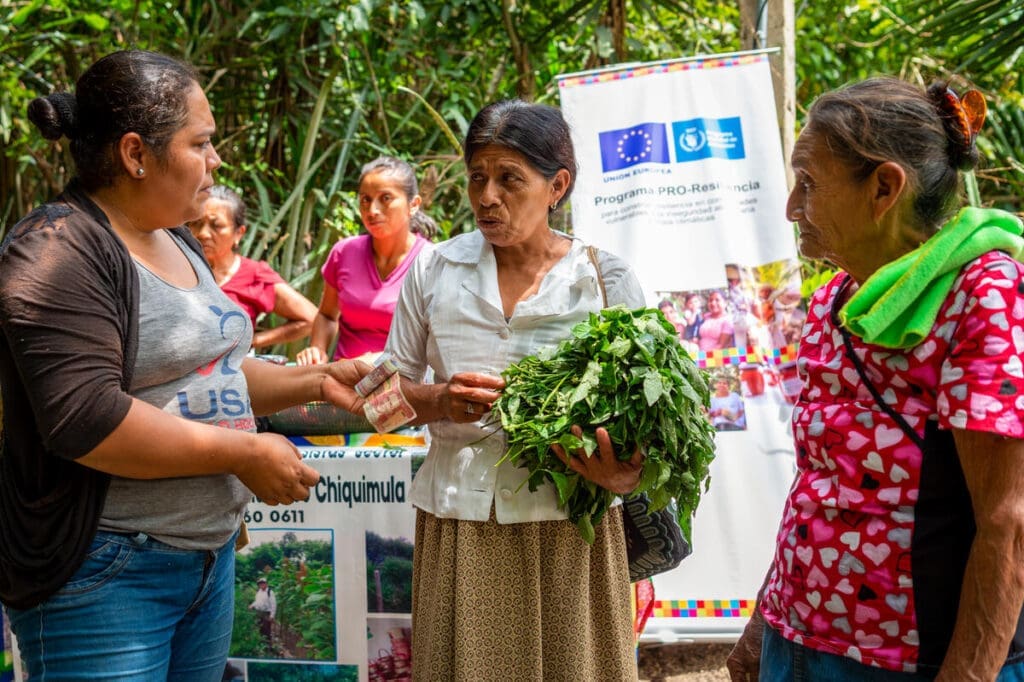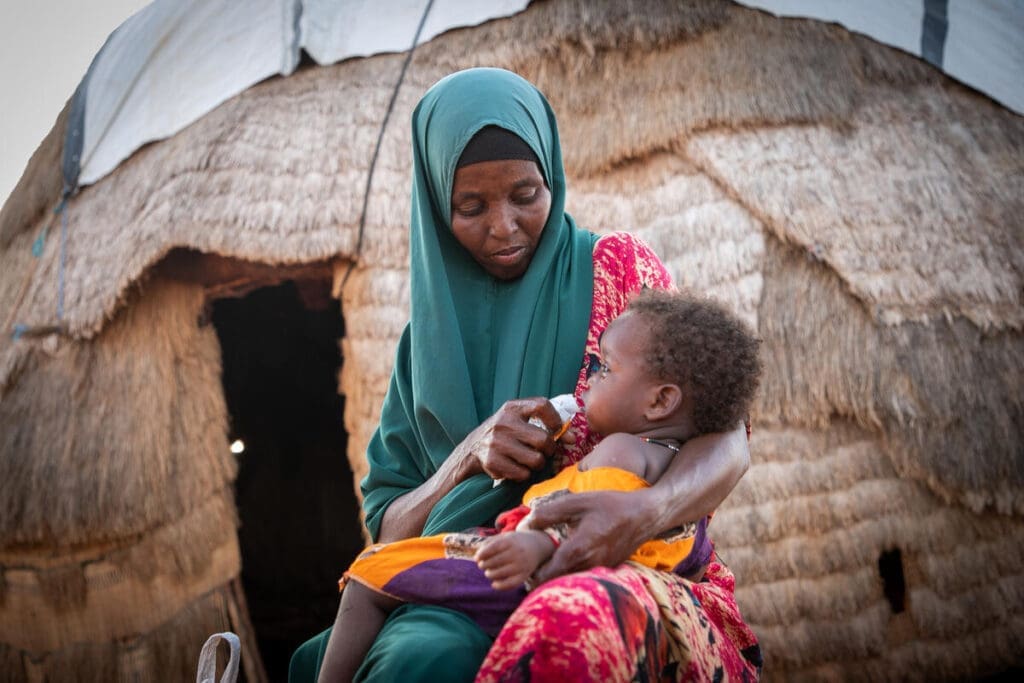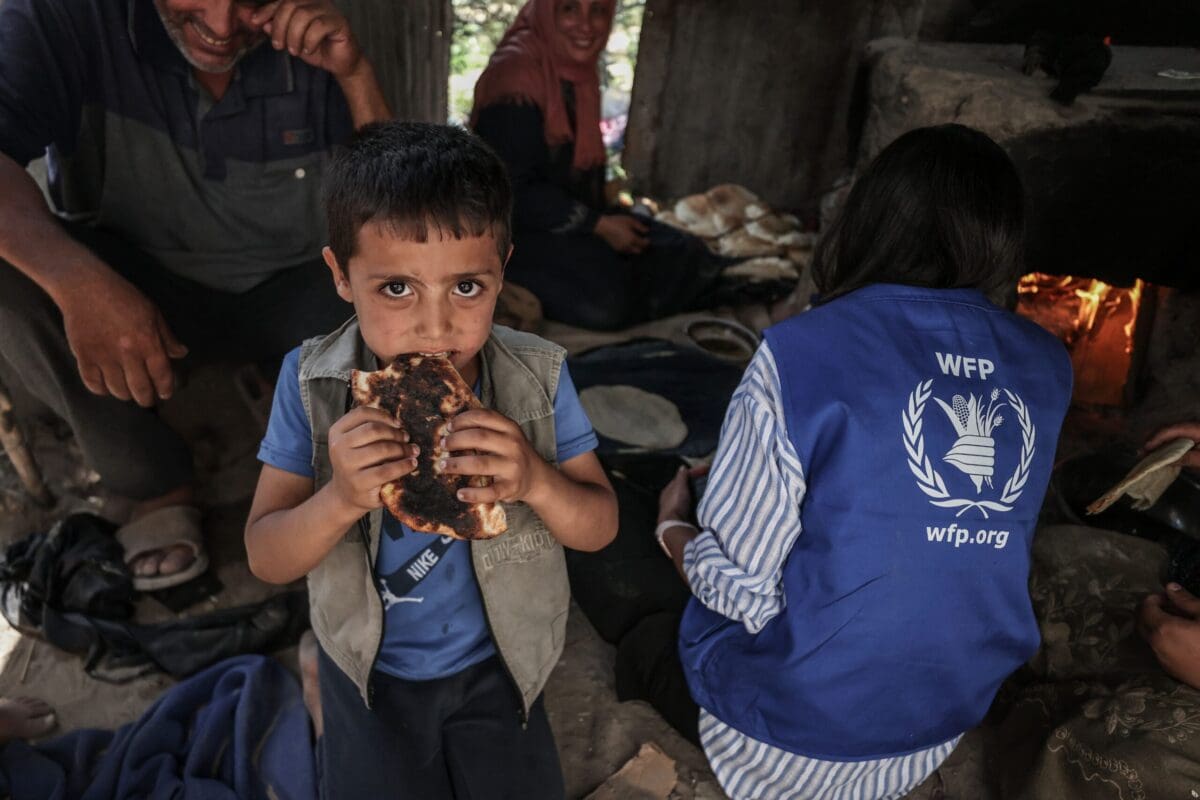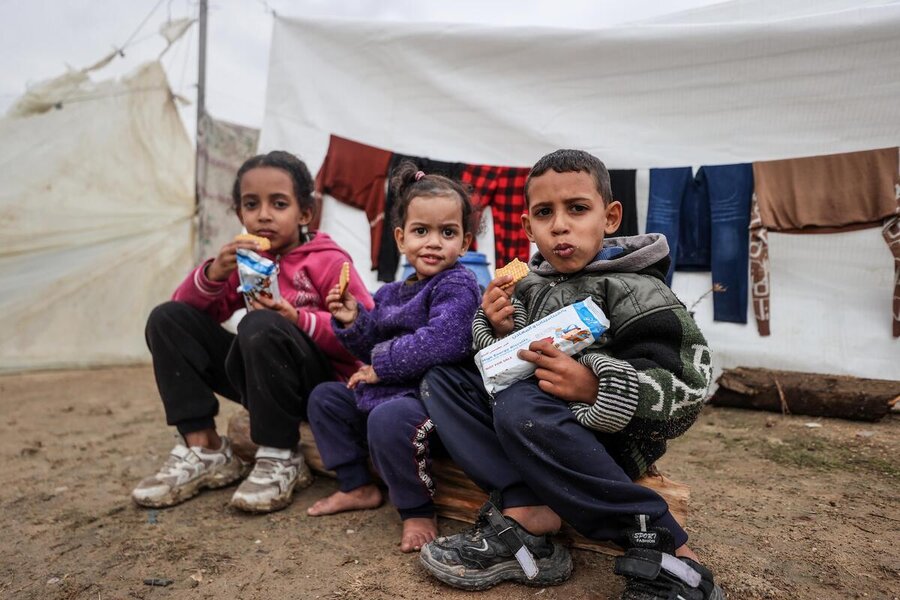How to End World Hunger: 6 Solutions for Zero Hunger

We are at the crossroads of one of the greatest challenges of our time: How do we end world hunger? There are 828 million hungry people in the world, including 349 million people facing severe hunger. While this is the largest global food crisis in modern history, we have the solutions for a zero hunger world.
In 2012, United Nations Secretary-General Ban Ki-moon launched the Zero Hunger challenge as the U.N. plan to end world hunger. The challenge reflects five elements from within the Sustainable Development Goals which taken together can end hunger. These Zero Hunger solutions can massively transform agriculture and food systems. In addition to these five solutions, the United Nations World Food Programme (WFP) knows the majority of the world’s hungriest people live in conflict-affected areas. For this reason, we include a sixth Zero Hunger solution: break the cycle of conflict and hunger.
Here is how the U.N. World Food Programme works tirelessly to execute these solutions and end world hunger.
1. Break the Cycle of Conflict and Hunger
With almost 60% of the world’s hungriest people living in conflict affected zones, conflict is the greatest challenge to Zero Hunger.
Conflict and hunger create a vicious cycle. When war erupts, instability forces people to find illicit and sometimes violent means of acquiring their necessities. In this unstable period where access to food is fought over, the risk of social unrest heightens.
The U.N. World Food Programme is on the frontlines of the world’s worst conflicts, going where others can’t to deliver lifesaving food in the hardest-to-reach areas. The agency’s work to solve hunger has contributed to improving prospects for peace – effectively breaking the conflict and hunger cycle. In conflict zones, the U.N. World Food Programme is there to provide food and cash assistance, keep kids in classrooms with school meals and rebuild infrastructure through community projects.
In 2020, the U.N. World Food Programme became the Nobel Peace Prize laureate and was recognized by the Nobel Committee “for its efforts to combat hunger, for its contribution to bettering conditions for peace in conflict affected areas and for acting as a driving force in efforts to prevent the use of hunger as a weapon of war and conflict.” The U.N. World Food Programme’s Nobel Peace Prize is a powerful call to action, recognizing the important link between conflict and hunger and the critical role of food assistance as a building block to peace and stability.
2. Increase Sustainability and Build Resilience to Climate Change

Climate extremes are one of the main drivers of severe hunger. We have entered a ‘new normal’ where consecutive and extreme weather events – like droughts, flooding, hurricanes and cyclones – decimate farming and drive displacement. As a result, communities constantly operate in recovery mode: Diminished economies, destroyed infrastructure and disrupted access to food significantly reduce people’s capacity to rebuild their livelihoods and prepare for the next imminent disaster.
The U.N. World Food Programme helps communities build resilience to climate change through long-term solutions including:
- Reforestation and land rehabilitation projects
- Climate insurance for small-scale farmers
- Providing local institutions with access to sustainable energy solutions
To tackle the challenges of climate change, food availability and food access, we must also help farmers grow a more diverse range of crops and livestock. That’s why the U.N. World Food Programme teaches farmers new techniques, equips them with tools and educates their communities about the nutritional importance of eating a wide range of foods.
3. Address Poverty & Inequality Through Social Safety Nets
Poverty and inequality are the root causes of global hunger. Imagine being a mother who must forgo her daily meals to feed her children, or a farmer who must sell food rations in exchange for farming equipment.
The U.N. World Food Programme helps governments strengthen national safety nets that safeguard their citizens from poverty, inequality and hunger. By 2030, the U.N. World Food Programme aims to substantially increase people’s access to their national social protection systems – thereby promoting equitable economic growth.
The U.N. World Food Programme is the world’s largest provider of humanitarian cash, distributing cash to over 40 million people across 70 countries. The global food crisis is mainly one of access where record-high prices mean people cannot buy what they need. Where markets are functioning, the U.N. World Food Programme can provide cash-based assistance in the form of bank notes, vouchers, debit cards, e-money or mobile money. Cash transfers empower families to decide how to spend their money while supporting local markets and economies.
Through Food for Assets projects, the U.N. World Food Programme offers food or cash assistance while participants work on community assets like roads, dams and irrigation systems. The community-centered approach of coming together to reinvigorate participants’ environment has extra benefits like promoting nutrition, gender equality and social protection. For example, in Mozambique, the Food For Assets program provides female farmers with opportunities to test out innovative farming techniques designed to build their harvests’ resilience to climate change. Participants may also receive agricultural training, which boosts their income and access to food.
4. Help Rural Farmers Connect to Markets

One of the cruelest ironies of hunger is its disproportionate impact on small-scale farmers—the very people who grow food for a living. Small-scale farmers make up the majority of people living in poverty. Their economic losses come from lack of access to production inputs like proper storage, fertilizer and farming equipment as well as constant challenges from climate extremes.
The U.N. World Food Programme works to connect small-scale farmers to local economies while providing them with the resources to improve production, reduce their post-harvest losses, develop business skills and gain access to financial tools.
In over 40 countries the U.N. World Food Programme connects small-scale farmers to markets so that they can supply their own communities with lifesaving food. The program Purchase for Progress (P4P) partners farmers with the private sector, encouraging investments that diversify their crops and expand their business prospects.
5. Reduce Food Waste & Food Loss
The world produces more than enough food to feed everyone, and yet 828 million people still go to bed hungry each night. In high-income countries, 40% of food is wasted because people buy more food than they can consume. In low-income countries, where the vast majority of the world’s hungriest people live, most food loss occurs during the early stages of growth, harvest and storage.
The U.N. World Food Programme is working to eliminate food loss and waste by:
- Providing farmers with modern storage equipment like silos and air-tight bags
- Offering long-lasting foods like flour, dried beans and salt – all properly packaged in sturdy containers
- Investing in innovations like hydroponics that allow communities to grow, sell and store food in the harshest conditions
- Selling and storing food in impossible places due to exposure of extreme temperatures, excess dust and general pollution
- Advocating for policy that distributes American-grown crops to people in need – like the U.S. Farm Bill which supplies the U.N. World Food Programme with U.S. agricultural commodities like rice, corn, wheat and soybeans for people abroad
6. Eliminate Malnutrition in Mothers & Children

45% of deaths among children under age 5 are caused by malnutrition. The first two years of a baby’s life are critical when it comes to receiving the nourishment they need to grow into a healthy adult. From Fortified Blended Foods to High Energy Biscuits, the U.N. World Food Programme ensures millions of children and pregnant and nursing women have access to specialized nutritious food. Last year, the U.N. World Food Programme reached more than 17 million mothers and children with programs to prevent and treat malnutrition.
What You Can Do to End World Hunger
Zero Hunger may seem like an impossible goal, but through these six solutions we can make this dream a reality. The U.N. World Food Programme plays a vital role in that work by:
- Ensuring people in conflict-affected areas will not have food weaponized against them
- Anticipating, responding to and building resilience against the shocks and stresses of climate extremes
- Leveraging social safety nets, cash assistance and infrastructure to financially empower communities and local markets
- Connecting small-scale farmers with the tools they need to maintain sustainable agriculture for their country’s food security
- Making sure that the ample food that is grown across the world does not go to waste due to improper management or redistribution
- Protecting groups affected by or at risk of malnutrition (primarily mothers and children) by supplying them with specialized nutritious foods
You also play a vital role in ending world hunger. There are a lot of ways you can be part of creating a Zero Hunger world like playing the Freerice game, signing advocacy petitions or starting a fundraising campaign. Discover how you can be part of the solution for global hunger.
Unless action is taken now, millions of people have the potential to fall into deeper levels of hunger. We can respond to this global emergency by addressing hunger at its root causes. We all have an obligation to build a future that better serves our planet and all the people that live on it.







